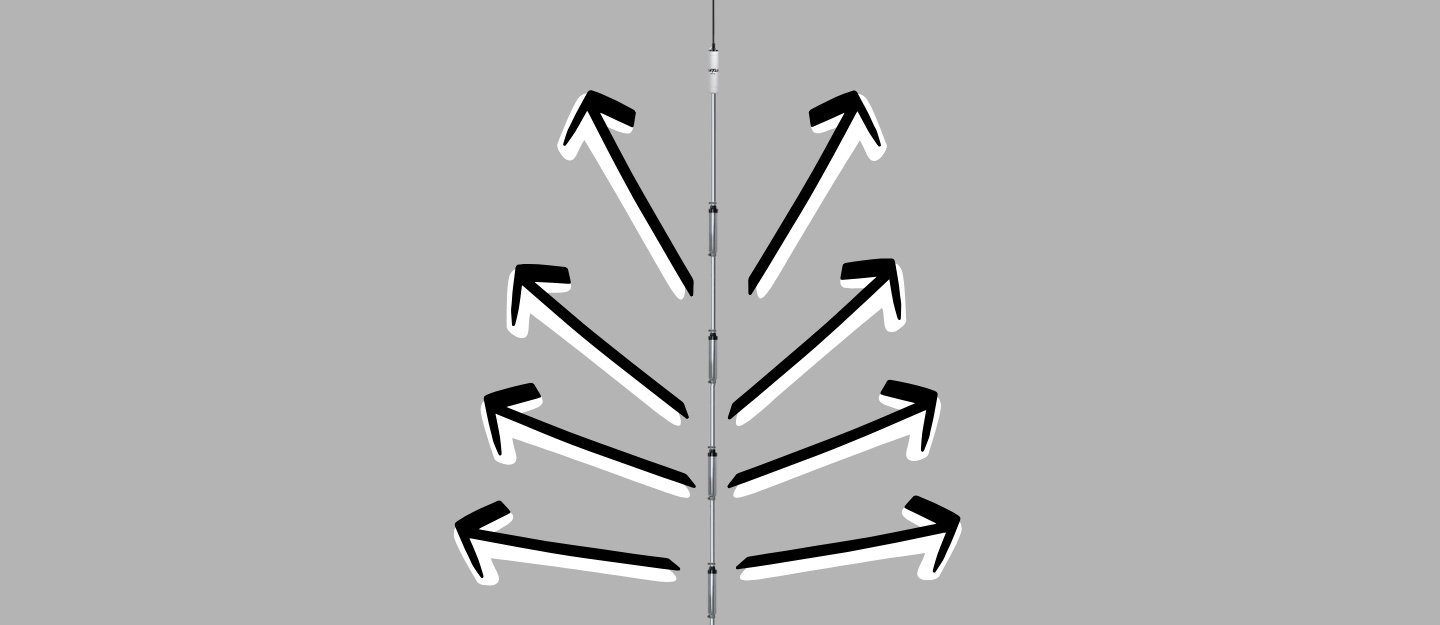Antenna takeoff angle plays a vital role in determining how well your signal travels and where it is heard. In simple terms, the takeoff angle is the angle above the horizon at which most of your transmitted power leaves the antenna. Lower takeoff angles send signals farther across the globe, while higher angles focus energy closer to home. Understanding this concept helps every ham operator choose the right antenna height and type for their communication goals.
What Is an Antenna Take-off Angle
When an antenna radiates, its energy spreads in multiple directions. However, most of that energy concentrates in certain patterns or lobes. The main lobe, where most power is radiated, defines the takeoff angle.
The Earth’s atmosphere and ionosphere bend and reflect radio waves, that angle determines how signals travel over distance. For example, a 10-degree takeoff angle might bounce off the ionosphere and reach another continent, while a 60-degree angle is better suited for regional contacts.
Why Takeoff Angle Matters
Takeoff angle affects both range and reliability. Lower angles typically favor long-distance or DX communication, especially on higher frequency bands such as 20 meters and above. In contrast, higher angles work better for near-vertical incidence skywave (NVIS) propagation, which covers short to medium distances on lower bands like 40 or 80 meters. Because every antenna interacts with the ground and surroundings differently, changing the height or design of an antenna can shift its takeoff angle dramatically.
How Antenna Height Influences Takeoff Angle
Antenna height is one of the main factors controlling takeoff angle. When an antenna sits close to the ground, the ground reflection combines with the direct radiation, creating an interference pattern. This pattern can either raise or lower the main lobe. For instance, a dipole about one-quarter wavelength high produces a high takeoff angle, ideal for local coverage.
As you raise the antenna to half a wavelength or more, the angle decreases, improving long-distance performance. Therefore, adjusting height is one of the simplest ways to optimize signal direction.
Ground Conductivity and Environment
Although height plays a major role, the ground under the antenna also matters. Poor soil conductivity, rocky terrain, or dry sand can raise the effective takeoff angle. Meanwhile, moist or conductive ground lowers it, helping radiate more efficiently at low angles.
Additionally, nearby structures, trees, or other antennas can distort the pattern. Consequently, site selection and grounding are just as important as antenna design.
Choosing the Right Takeoff Angle
A good takeoff angle depends on your communication goals and operating band. Generally, lower angles are best for long-distance (DX) communication, while higher angles are more effective for regional or near-vertical coverage. For example, a takeoff angle between 5° and 15° allows signals to travel thousands of miles by bouncing off the ionosphere, ideal for worldwide DX contacts.
Mid-range angles between 20° and 40° provide reliable coverage over a few hundred to a thousand miles, useful for state or regional nets. Higher angles between 60° and 90° favor near-vertical incidence skywave (NVIS) propagation, perfect for local and emergency communications.
Typical Takeoff Angles:
- 5°–15°: Long-distance DX communication
- 20°–40°: Regional or inter-state coverage
- 60°–90°: NVIS and local communications
Measuring and Predicting Takeoff Angles
Modern modeling software, such as antenna simulators, allows operators to predict radiation patterns before installation. These tools show how frequency, height, and ground type influence takeoff angle.
After installation, operators can test performance by observing signal reports, reverse beacon networks, or known propagation paths. By experimenting and adjusting setup parameters, they can fine-tune the antenna for the best possible signal in real-world conditions.
Final Thoughts
Understanding antenna takeoff angles transforms average setups into optimized communication systems. By managing height, location, and design, operators can control how their signals travel, either reaching across continents or strengthening local networks.
The radio propagation depends on angles as much as power, mastering takeoff angle gives any ham operator the confidence to communicate farther, clearer, and more effectively under all conditions.
Please consider Donating to help support this channel
